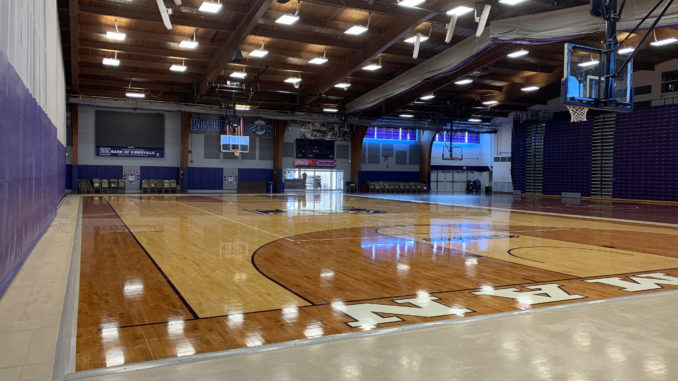
Athletic funding at Truman State University is acquired and used in a variety of ways. With recent programs being cut, athletic programs and the University are challenged with funding throughout the year.
Truman has 16 athletic programs that require funding, some of which come from the University. Truman has to divide its small income of funding between many different programs which is difficult for the University. State budget cuts from 2018 resulted in many higher-education institutions being forced to come up with ways to decrease their spending.
Dave Rector, vice president for administration, finance and planning, said the athletics department has many different ways of getting funding for each program.
“The largest source of funding for Div. II schools like Truman is institutional funds, which means our state appropriations and student tuition,” Rector said.
Rector went on to talk about the $58 per semester athletic fee Truman charges each student. In the past, the student athletic fee has funded projects on campus such as the new turf on the football field and new scoreboards. Unlike bigger Div. I schools, Truman does not receive much income for athletics from ticket sales for admission into events because Truman allows students, faculty and staff to receive free admission into games.
Sports programs are also encouraged to fundraise for their team specifically. Many programs rely on camps, fundraisers and donations to use for team spending. Ginny Schranck, the women’s swim team captain, said fundraising is a major source of spending money for the team.
“Fundraising is important to the swim team because it is how we afford to do extra things throughout the season,” Schranck said. “This year we took a trip to Colorado Springs, which would not have been possible without our annual fundraiser. The fundraiser is your typical dinner with auctions and games, with most of the attendees being parents of the athletes. The team helps with all aspects of the event and it is always a success.”
When compared to Northwest Missouri State University, Missouri University of Science and Technology and Drury University — three other Div. II schools — Truman has the highest number of athletes, but the least amount of expenses and revenue spent on them, according to the Equity in Athletics Disclosure Act that submitted to the U.S. Department of Education. The EADA also shows that of the four schools, Truman ranks last in coaching staff salaries, student aid, recruiting expenses, total expenses and total revenue.
However, men’s basketball, for example, has the opportunity to gain funding in ways that some other sports do not. Truman receives offers from Div. I schools to play in exchange for money. Former men’s basketball player T.J. Schilling said that funding helps the team out in aspects that might help Truman in the future.
“Funding allows our team to gain equipment and gear for players,” Schilling said. “The players receive necessary technology advancements which can help the program in recruiting future players that will help the team succeed.”
Truman also gains funding from private donations to the Bulldog Student Investment Fund. According to Truman’s website, the Bulldog Fund directly helps athletic programs with success both on the field and in the classroom.
Donations to the Bulldog Fund help gifted students enjoy all of the excitement of competing at the Div. II level while allowing them to earn their education.
A private donation to the Bulldog Fund will help support student-athlete scholarships, facility improvements and retain top-caliber students, coaches and staff.
